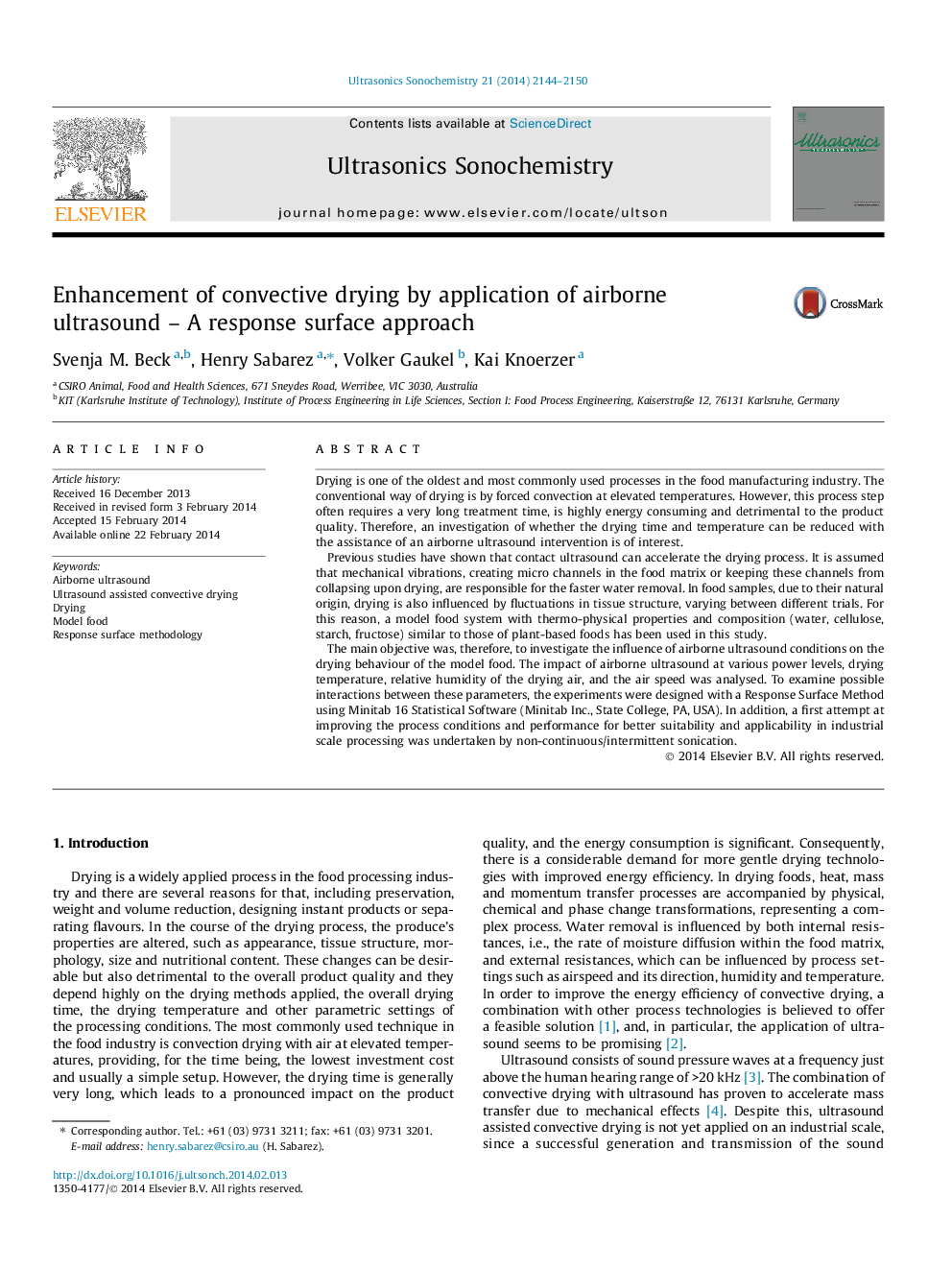| Article ID | Journal | Published Year | Pages | File Type |
|---|---|---|---|---|
| 1265076 | Ultrasonics Sonochemistry | 2014 | 7 Pages |
•Airborne ultrasound significantly enhanced the conventional hot air drying process.•The process parameters and their interactions substantially affected the drying process.•Optimum conditions were found using a response surface approach over the range tested.•Drying was still accelerated even though the ultrasound was applied in a time delay.
Drying is one of the oldest and most commonly used processes in the food manufacturing industry. The conventional way of drying is by forced convection at elevated temperatures. However, this process step often requires a very long treatment time, is highly energy consuming and detrimental to the product quality. Therefore, an investigation of whether the drying time and temperature can be reduced with the assistance of an airborne ultrasound intervention is of interest.Previous studies have shown that contact ultrasound can accelerate the drying process. It is assumed that mechanical vibrations, creating micro channels in the food matrix or keeping these channels from collapsing upon drying, are responsible for the faster water removal. In food samples, due to their natural origin, drying is also influenced by fluctuations in tissue structure, varying between different trials. For this reason, a model food system with thermo-physical properties and composition (water, cellulose, starch, fructose) similar to those of plant-based foods has been used in this study.The main objective was, therefore, to investigate the influence of airborne ultrasound conditions on the drying behaviour of the model food. The impact of airborne ultrasound at various power levels, drying temperature, relative humidity of the drying air, and the air speed was analysed. To examine possible interactions between these parameters, the experiments were designed with a Response Surface Method using Minitab 16 Statistical Software (Minitab Inc., State College, PA, USA). In addition, a first attempt at improving the process conditions and performance for better suitability and applicability in industrial scale processing was undertaken by non-continuous/intermittent sonication.
